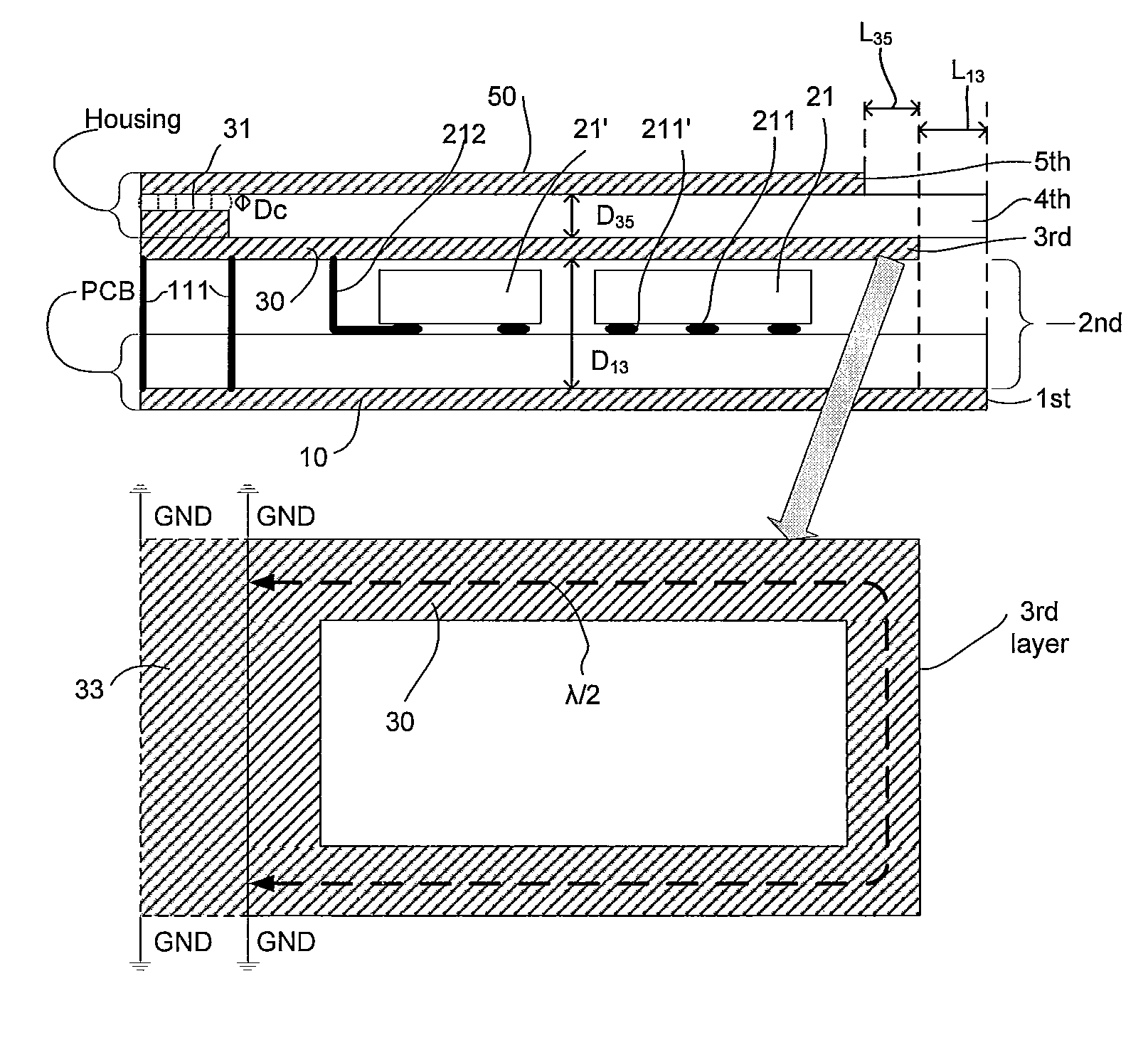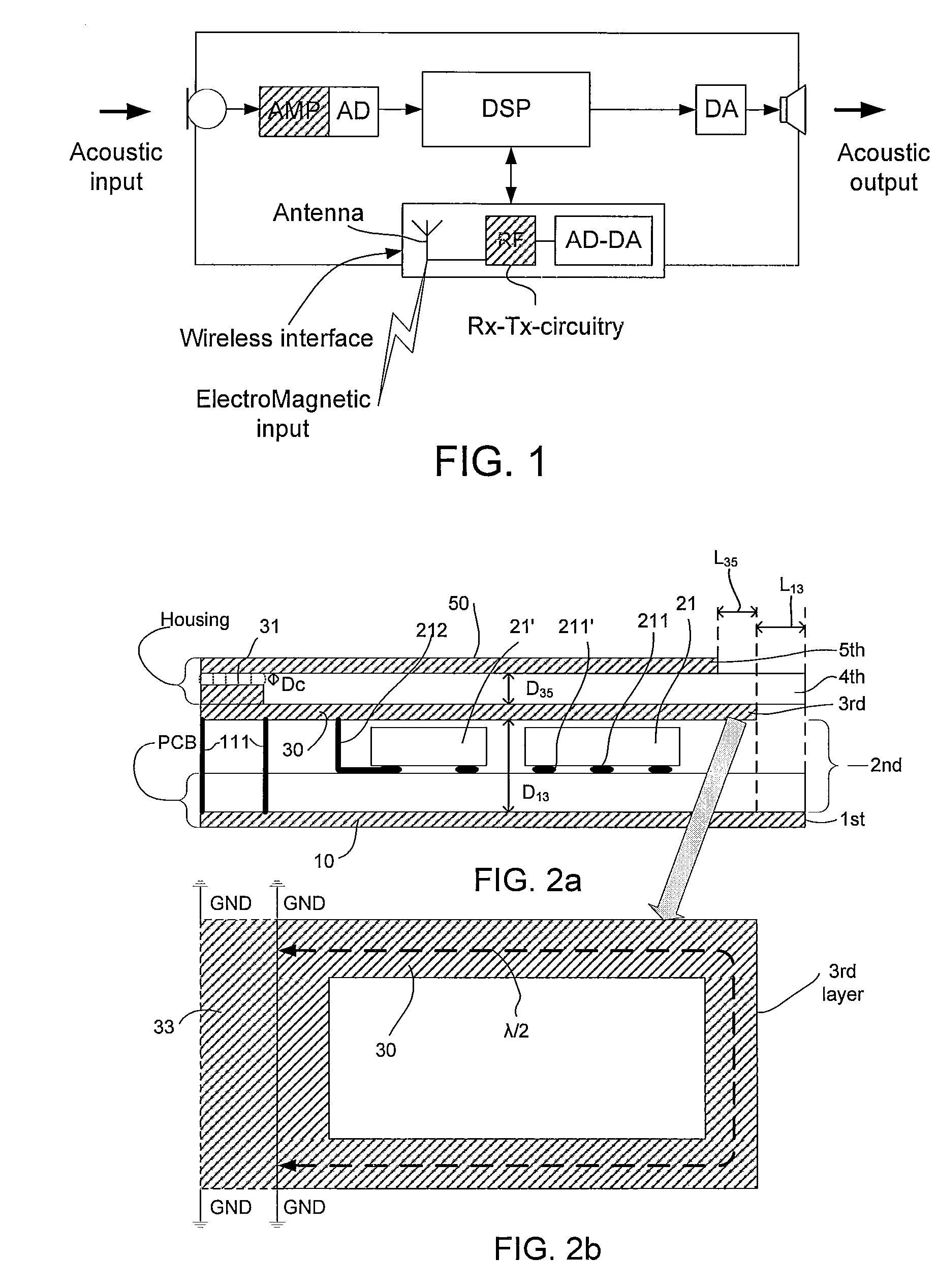Portable communication device comprising an antenna
a communication device and portable technology, applied in the direction of antenna supports/mountings, electrical devices, radiating element structural forms, etc., can solve the problems of difficult to provide appropriate technical specifications for 2.4 ghz antennas, and achieve good esd protection, good controllable (reproducible) capacitive coupling, and good esd protection
- Summary
- Abstract
- Description
- Claims
- Application Information
AI Technical Summary
Benefits of technology
Problems solved by technology
Method used
Image
Examples
Embodiment Construction
[0085]FIG. 1 shows a communication device comprising a wireless interface. The communication device, e.g. a headset, a protective earplug or a hearing instrument, comprises a microphone system (comprising one or more microphones) for converting an acoustic input sound to an electric input signal, an amplifier (AMP) and an analogue to digital converter (AD) for providing a digitized electric input signal representative of the acoustic sound. The communication device further comprises a signal processor (DSP) for processing the digitized electric input signal (e.g. for applying a frequency dependent gain to the signal according to a users' needs (e.g. in a hearing instrument) or for otherwise enhancing and / or encoding the input signal (e.g. in a headset)). The communication device further comprises a digital to analogue (DA) converter and an output transducer (here a speaker; in hearing aid applications often termed a ‘receiver’) for presenting a signal from the signal processor to a ...
PUM
 Login to View More
Login to View More Abstract
Description
Claims
Application Information
 Login to View More
Login to View More - R&D
- Intellectual Property
- Life Sciences
- Materials
- Tech Scout
- Unparalleled Data Quality
- Higher Quality Content
- 60% Fewer Hallucinations
Browse by: Latest US Patents, China's latest patents, Technical Efficacy Thesaurus, Application Domain, Technology Topic, Popular Technical Reports.
© 2025 PatSnap. All rights reserved.Legal|Privacy policy|Modern Slavery Act Transparency Statement|Sitemap|About US| Contact US: help@patsnap.com



